March 2024
In this VETgirl online veterinary continuing education blog, Dr. Justine Lee, DACVECC, DABT talks about why she used a Continuous Glucose Monitor (CGM) FreeStyle Libre 2 on herself as a veterinarian! After all, we have to put on our own oxygen mask first and make sure we’re taking care of ourselves (physically too) before we take care of others.
By Dr. Justine Lee, DACVECC, DABT
Director of Medicine / CEO, VETgirl
Using a Continous Glucose Monitor (CGM) FreeStyle Libre as a Veterinarian
Recently, I finished reading the book by Dr. Peter Attia, MD called OUTLIVE: The Science & Art of Longevity. Dr. Peter Attia, a physician and longevity expert known for his work in metabolic health, argues that CGM can provide valuable insights into one’s health status and help identify potential risk factors before they result in chronic diseases. While some parts of the book were hokie (I can say that, since I went to Virginia Tech, who’s mascot are the Hokies!), I found other parts truly transformational. After all, as veterinary professionals, we talk about quality of life (QOL) all the time, but do WE actually have quality of life? As I progress through the second half of my life (Hello, 50’s!), I really related to Dr. Peter’s philosophy of aging well… not just living longer. After all, the difference between healthspan and lifespan is quite profound.
So, based on the recommendation from his book, I decided to let a Continuous Glucose Monitor (CGM) FreeStyle Libre 2 fall upon my body. So, what exactly is a CGM? A CGM is a medical device that measures and records a person’s glucose levels throughout the day and night. It consists of a small sensor inserted under the skin, which continuously measures glucose levels in interstitial fluid and sends real-time readings to a receiver or smartphone app. This technology has been primarily used by people with diabetes to manage their blood sugar levels, but it is gaining popularity among individuals who want to monitor their health and wellness.
By tracking your glucose levels with a CGM, individuals can gain a better understanding of how their body responds to different foods and activities, as your glucose levels fluctuate throughout the day (and night) due to factors such as food intake, physical activity, and stress.
In full disclosure, when a CGM fell on me, it wasn’t because I was worried about diabetes. I know I’m not diabetic based on routine, annual, fasted blood work. But I wanted to see what my body was doing based of some of the recommendations from this book. Being a carb-oholic and having a sweet tooth (I like to “reward” myself with a sweet snack each night once the kid is put to bed!), was I at risk for insulin resistance? (BTW, at Penn Vet, the overnight team used to call me “The Grandma” during my ECC residency, as I could make any cat or dog eat and always brought in two Tupperware meals of pasta for my shifts). #I<3Carbs
The other reason why I wanted to experiment with a CGM? Because they are all the rage right now in veterinary endocrinology, and I wanted to understand what the hype was all about. Now, while I’ve advocated for CGMs to help with more intensive insulin regulation and glucose monitoring in the veterinary patient, I have never actually put one on a pet… after all, I’m emergency critical care, and I only save these patients from their diabetic ketoacidotic (DKA) state before turfing the patient for long-term care to the friendly internist down the hall. The internists I used to work with used these FreeStyle Libre CGMs all the time in dogs and cats for easier monitoring of their patients with great success.
So, what I wanted to personally find out… where these CGMs easy to use and interpret, and what would I find if I put a CGM on myself? Why did I want to monitor my interstitial glucose (neurotically)?
1. To find out how CGMs work and what my pet owners go through
When I first followed the video directions on how to put on a FreeStyle Libre 2, I was instantly amazed. Not only did I always think there were TWO CGM in the box, but low and behold, there was only one. Secondly, the instructions – while easy to follow – did require a really methodical application. You had to wipe the skin clean with alcohol, dry it off appropriately, twist the two separate FreeStyle Libre pieces together, and then stick it on your arm (I chose my left triceps area). You have to download the app and learn how to scan. And, I didn’t know that this CGM expired in 14 days for interstitial glucose monitoring before the app just stops working.
What’d I learn? The miscommunication of thinking there were 2 CGMs in the box (there’s only one!), and not communicating to pet owners that CGMs only lasted 14 days. Next, telling the pet owner that their pet couldn’t “feel the needle.” You can. The subcutaneous needle is bigger than you think, and I could definitely feel the needle being stuck in my arm. Think of it as hurting at the level between a flu vaccine and a mosquito bite. Not bad, but you can feel it. The good news? The sensation goes away after a few hours and you can’t feel it for the remaining 14 days unless you actually hit the sensor hard by accident (e.g., running into walls in top Justine-Lee-post-Angell-internship-walking-speed).
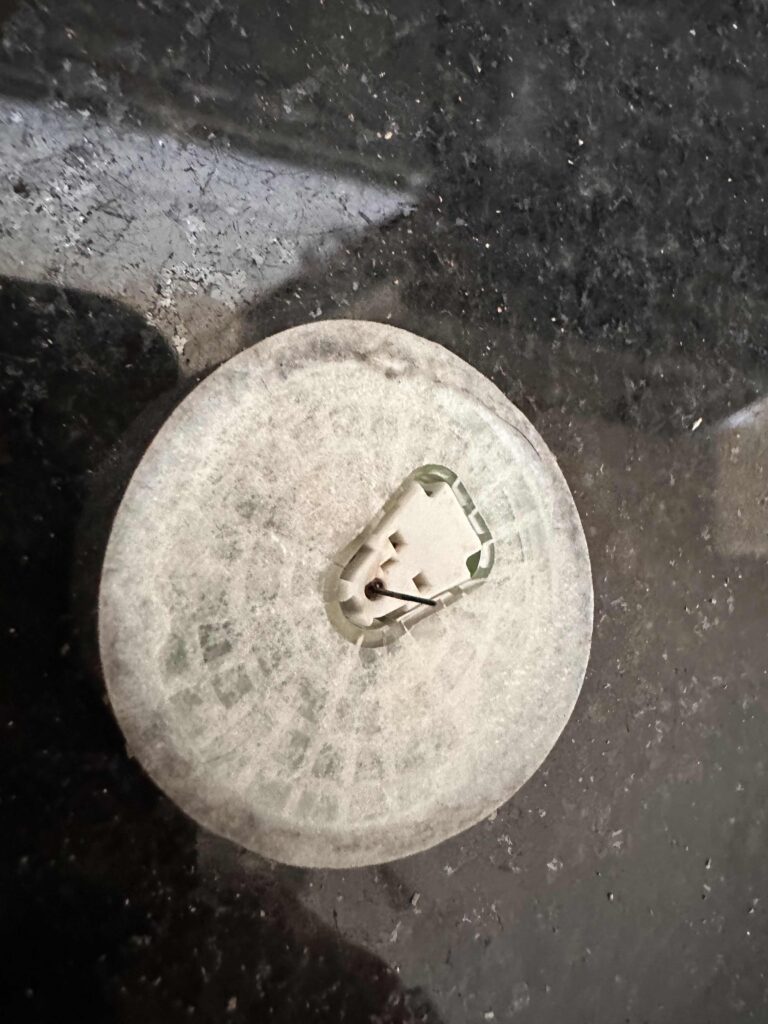
After removing the CGM, you can see how big the needle really is…
So, using a CGM made me realize that pets would react slightly to it, and that if you put it in an area where there’s not a lot of SQ tissue (e.g., over the dorsal neck region of a cat), the needle could rarely result in complications… like hitting the pleural space in a cachexic veterinary patient. (I once had an asthmatic Burmese cat develop a severe pneumothorax from acupuncture needles, so yes, it happens!). Thankfully, I have lots of jiggle in the triceps area, so this didn’t affect me.
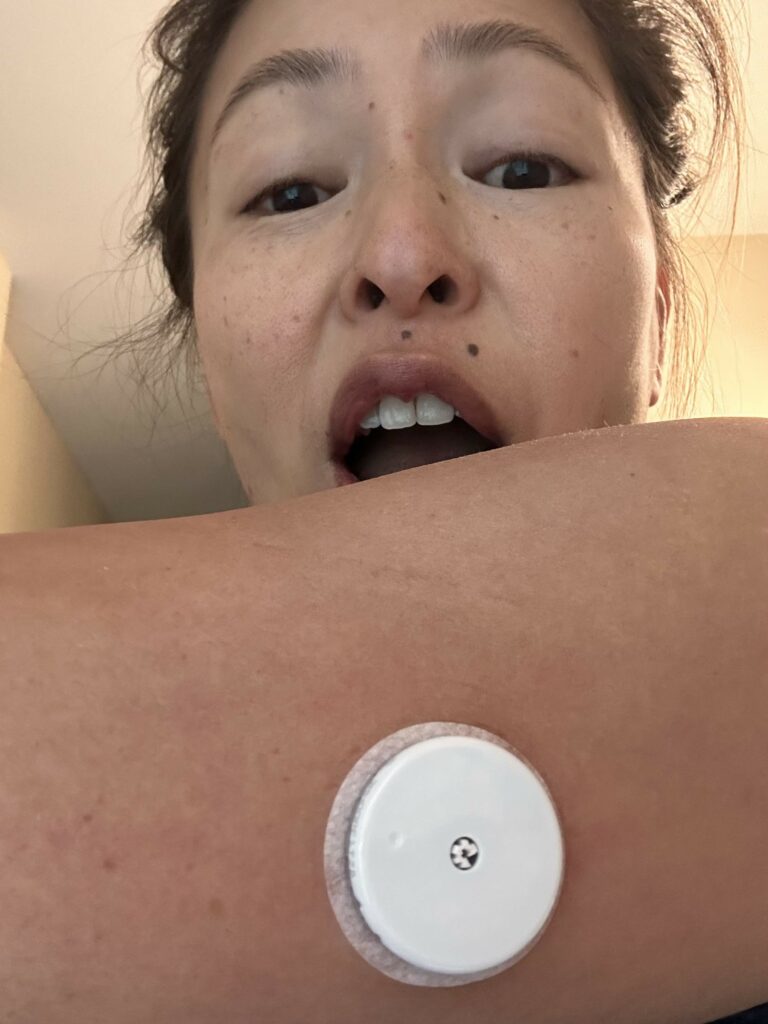
My waterproof CGM on my left tricep
2. For overall health monitoring
The second thing I learned from sticking a CGM on myself? Having a CGM on me really made me aware of my overall health. The good news is that I don’t have diabetes mellitus, and 99% of the time, my interstitial glucose was in the target range for a diabetic (70-180 mg/dL). 1% of the time, my interstitial glucose was in the “elevated for a diabetic” range of 181-240 mg/dL, and this was actually during my intense ice hockey games.
Now, as a criticalist, I never used to send pet owners home with ketone or glucose urine dipsticks, as they didn’t understand the normal “cycle” of when glucose was high or low in relation to when insulin was administered SQ (e.g., I don’t want to get called every single time the urine dipstick shows 4+ glucosuria, as the pet owner doesn’t understand the glucose/insulin timing!). However, despite getting a C in physiology during vet school, I felt that I could accurately interpret my own CGM (I expected to see my interstitial glucose measurement spike after eating a meal, fall lower when I was “hangry,” and go either up or down with intense exercise). Being able to assess my own overall health was empowering and actually made me feel like I was healthy.
3. To Minimize Insulin Resistance
Like I mentioned, I’m a carb-aholic and love my sweets. And I was worried about the ever-growing, strong evidence that insulin resistance does some bad things to your body… from resulting in Type 2 diabetes mellitus to contributing towards physical changes in your brain consistent with Alzheimer’s (up to 5 fold), increasing one’s risk to cancer (up to 12 fold) and increasing one’s risk of death by cardiovascular disease (by up to 6 fold). So, I really did want to evaluate what my interstitial glucose was doing as a “normal, healthy” older adult.
What else did I discover while I had my CGM on?
I like to neurotic measure my glucose level on the FreeStyle Libre 2
First, I discovered that I was a wee bit neurotic glucose monitoring (averaging 3 scans a day over the 14-day period, but more like 10-20 scans a day for the first few days of application). Initially, I liked to scan my glucose level every 15-60 minutes, more frequently during exercise and within 1-3 hours of eating meals.
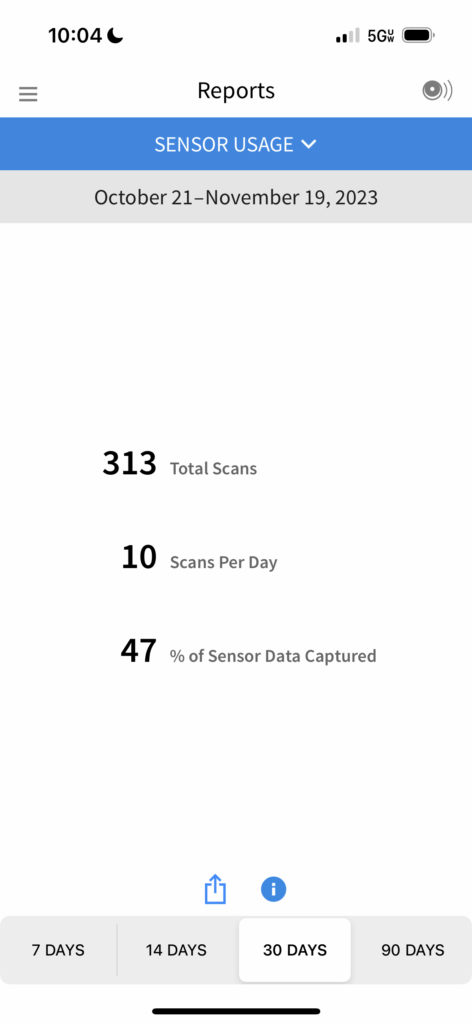
I scanned my CGM quite a bit over a 2 week period
I’m not actually Hangry
The next thing I discovered is that I don’t actually get hypoglycmiec when I’m hangry until I’m SEVERELY starving. In full disclosure, I rarely have this sensation of severe hunger, as I snack and eat every 3-4 hours. But when I was feeling hangry, I noticed that my glucose levels were consistently normal on the CGM for at least an hour, meaning that my body still maintained interstitial glucose levels well… which is likely a very good physiological warning (e.g., “Find food soon, but I’ll regulate you glucose levels for at least an hour until you scavenge food from the cabinets/cave.” I realized I couldn’t use the excuse of irritability to “hangriness” after all, as my interstitial glucose was normal. Snap. It also made me more aware and cognitive of the feeling of hunger, which is likely a good sensation to have and be aware of.
Intense Exercise Affects My Glucose Levels
The next thing I discovered with my CGM? During intense exercise, my liver and muscles kicked a$$. My liver was in overdrive to increase my glucose production (via gluconeogenesis and glycogenolysis – you’ve got to learn something pathophys in this VETgirl blog!) to match the high demands of my muscle glucose uptake (AKA wobbly hockey legs). I noticed my interstitial glucose spiked up to 120-140 mg/dL during high intensity interval training (HIIT) and up to 180 mg/dL while playing ice hockey (up to 270 mg/dL when we only had 8 players on the bench! Hello, best aerobic exercise ever!).
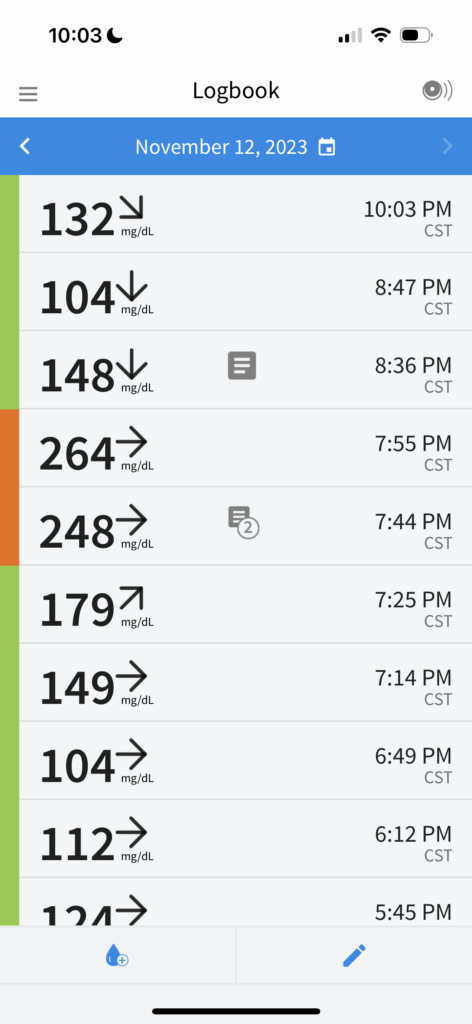
Pretty impressive hyperglycemia (almost 270 mg/dL) while playing ice hockey with only 2 subs
My Glucose Goes Up After Eating… but It Depends on What I Eat!
And the last thing I learned from my CGM. Duh, but your glucose goes up after eating. But first, a shout out to the amazing pancreas and how quickly it releases insulin to prevent huge spikes in interstitial glucose levels! I would typically have a spike in glucose within 30-60 minutes after eating… but the severity of the hyperglycemia directly correlated with what I ate. When I ate my normal kale-yogurt-banana-almond shake every morning, I had a minimal spike in glucose… but when I ate vanilla yogurt with some carb sprinkled on top (e.g., granola), the spike in glucose was dramatic. When I ate dessert or starch, my glucose spike was massive, compared to when I ate a more vegetarian/vegetable-based meal.
While using the FreeStyle Libre 2, I realized that the 2 cups of kale that I had in my kale shake likely increased my stomach motility (Hello, roughage!), and didn’t trigger as much of a glucose spike as compared to other foods that I ate. Secondly, I realized how much sugar there is in everything… even vanilla yogurt. I’d see my interstitial glucose spike up to 140-160 mg/dL within minutes of eating. So, did I care? Yes, it made me more aware of the sugar content in things. And it ended up making me “tweak” my nutrition (in full disclosure, I typically eat pretty healthy except when I’m business traveling!). From minor changes to mixing plain Greek yogurt with vanilla yogurt to minimize the glucose exposure instead of previously just eating the vanilla yogurt. From snacking less during the day. To not always reaching for ice cream to fulfill my sweet craving at night (but having some greek yogurt and blueberries instead).
Obviously, please note that a CGM is not a diagnostic tool and should not be used as a substitute for medical advice. It can provide valuable insights, but it should always be interpreted in conjunction with other health markers and under the guidance of a healthcare professional (You know, a “real doctor.”)
Overall, having a CGM on me made me more conscious of the amount of “sugar” products I was taking in. This is likely due to the Hawthorne effect, when the “study” helped me improve or change my behavior because it was being studied (neurotically). Having a CGM on made me appreciate my insulin response and respect the pancreas and liver more. I’m not advocating for everyone to slap a CGM on themselves, but I am advocating that we as veterinary professionals take good care of ourselves. If there’s only one book you read in 2024, I’d recommend this one…
Weigh in. What do you do to elevate your care of self and health?
Please note that the opinions of this blog are the expressed opinions of Dr. Justine Lee, DACVECC, DABT.
Only VETgirl members can leave comments. Sign In or Join VETgirl now!
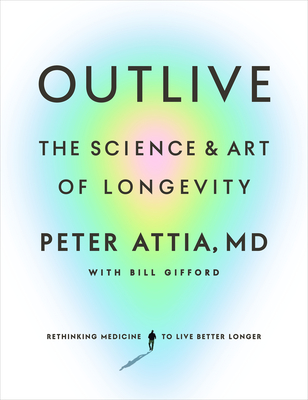
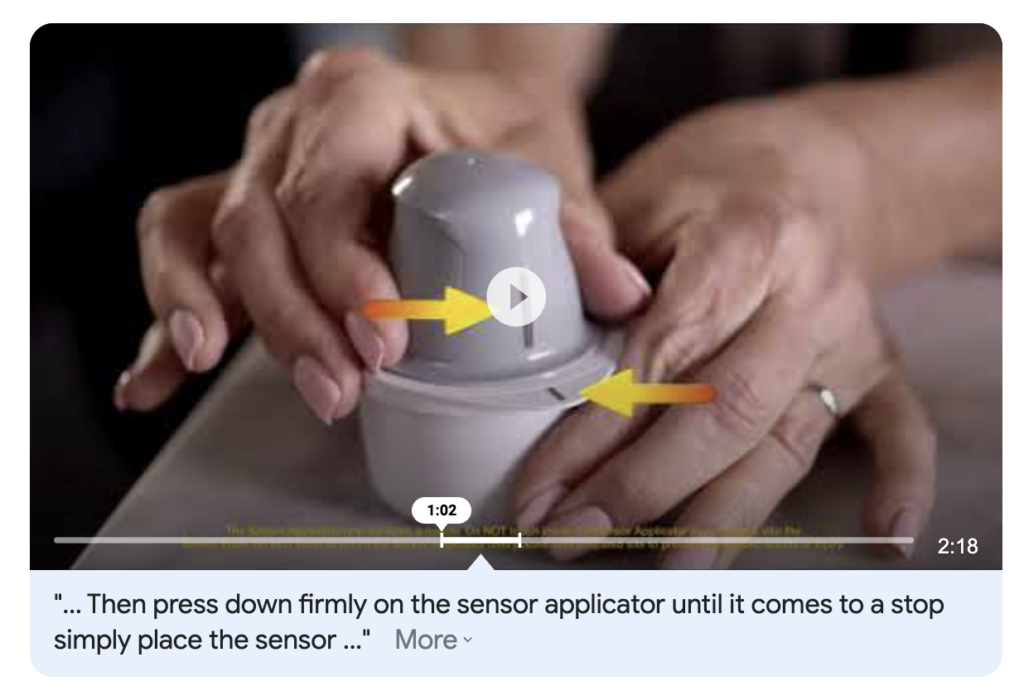
I LOVE going to the gym as of late and think it’s really helped me with my health goals.
My partner uses a dexcom CGM for his glucose monitoring device and it’s interesting to see how he ‘reacts’ to low/high glucose. Many times when glucose is too low, he is INSANELY sleepy and i’m typically the one who has to get up and get him a snack or beverage to help raise his sugar. I’ll be sure to let him know that you discounted ‘hangriness’..
I thought the note about pneumo from acupuncture was CRAZY!
I really enjoyed this reading. Helped me through my shift, made me smile, and taught me more indepth information for something that I had broad knowledge on. Thank you!!